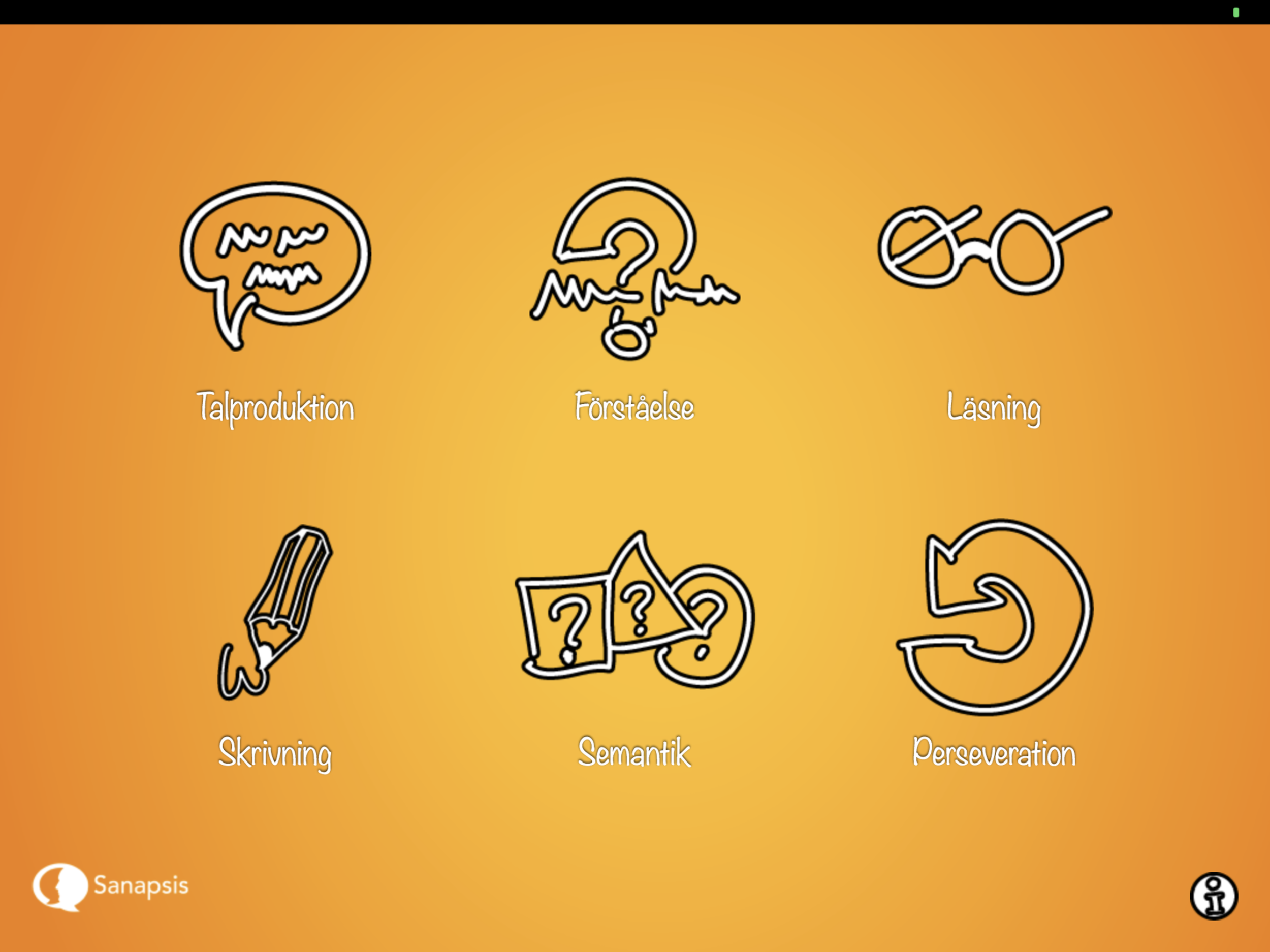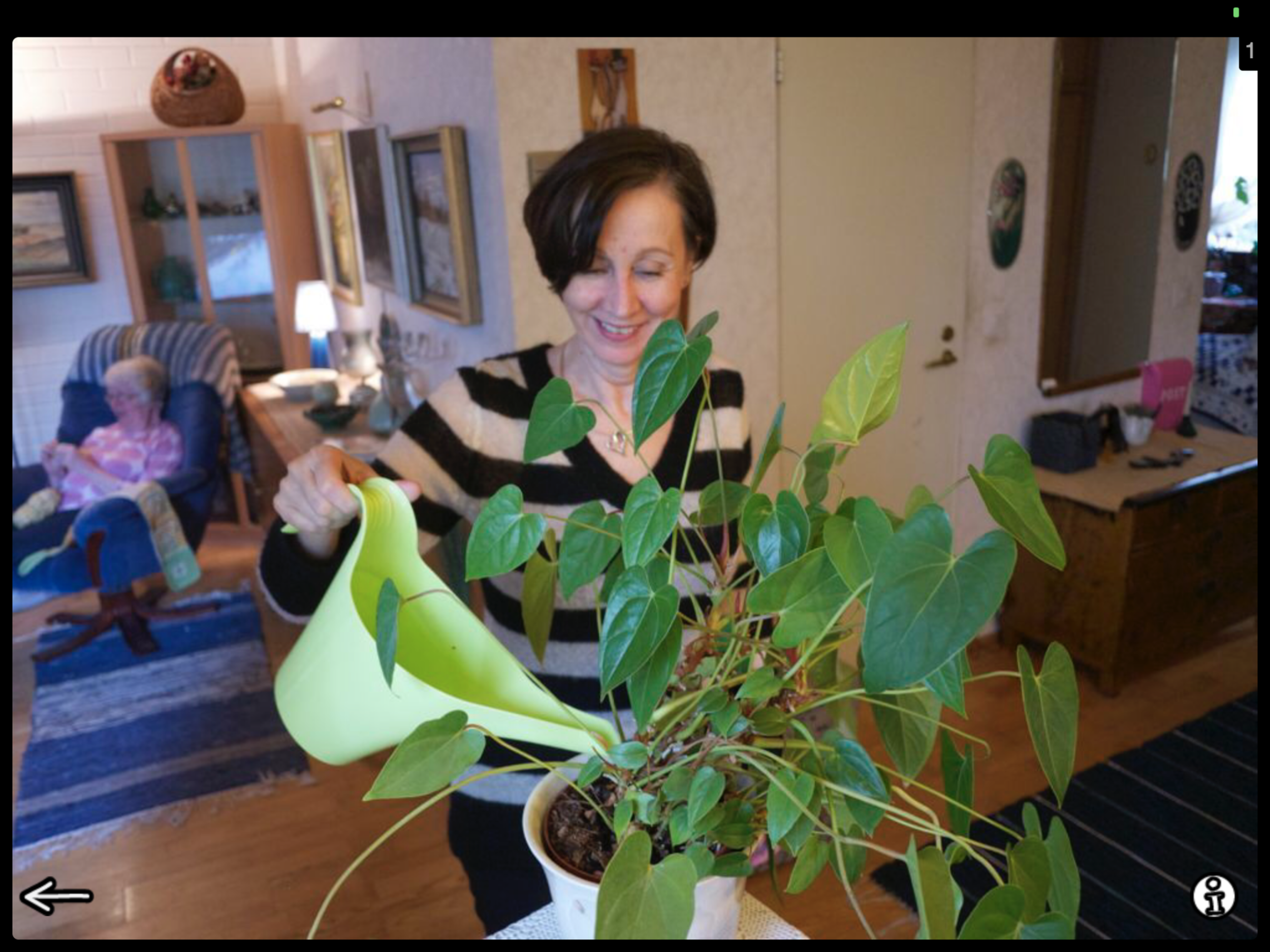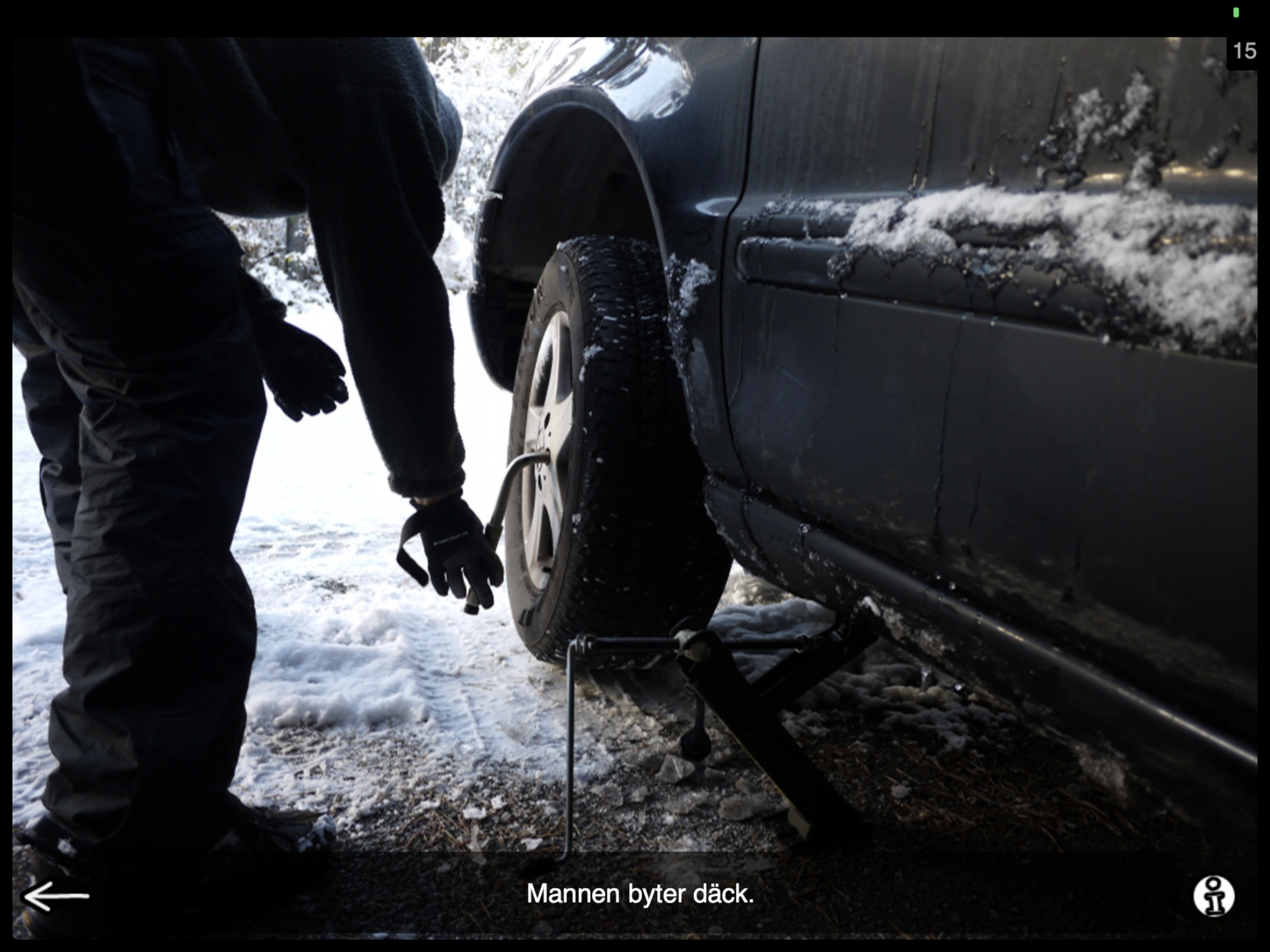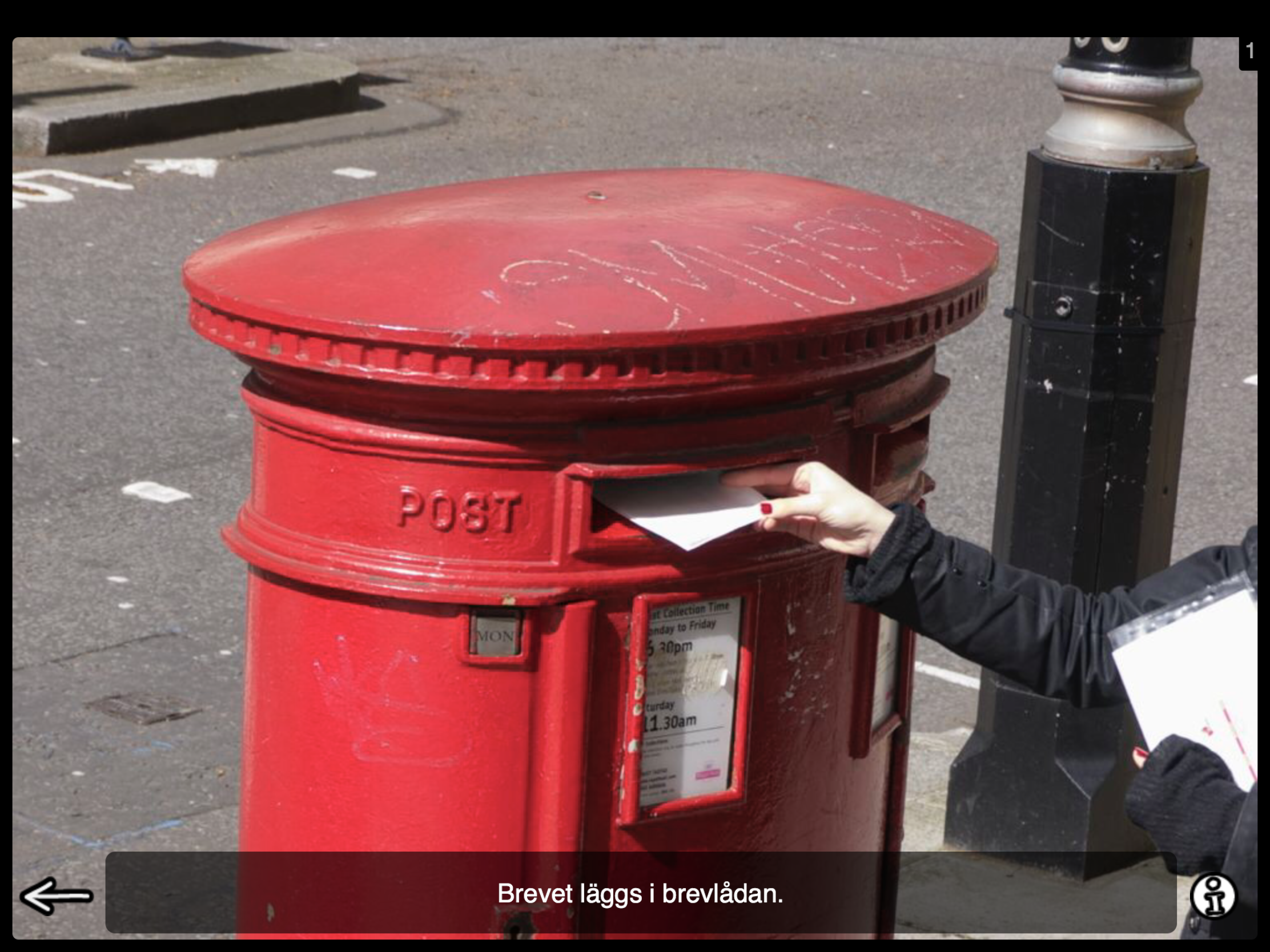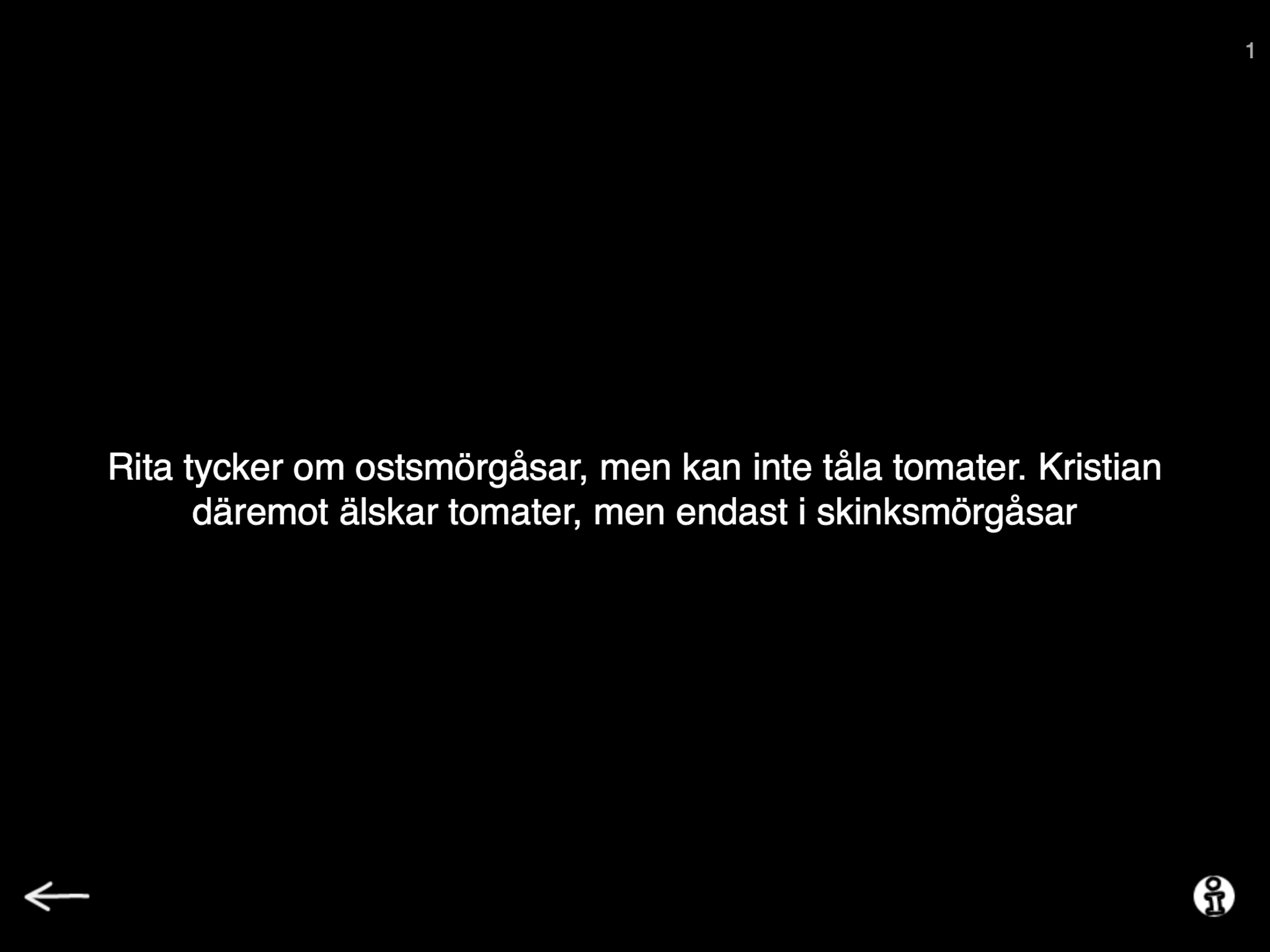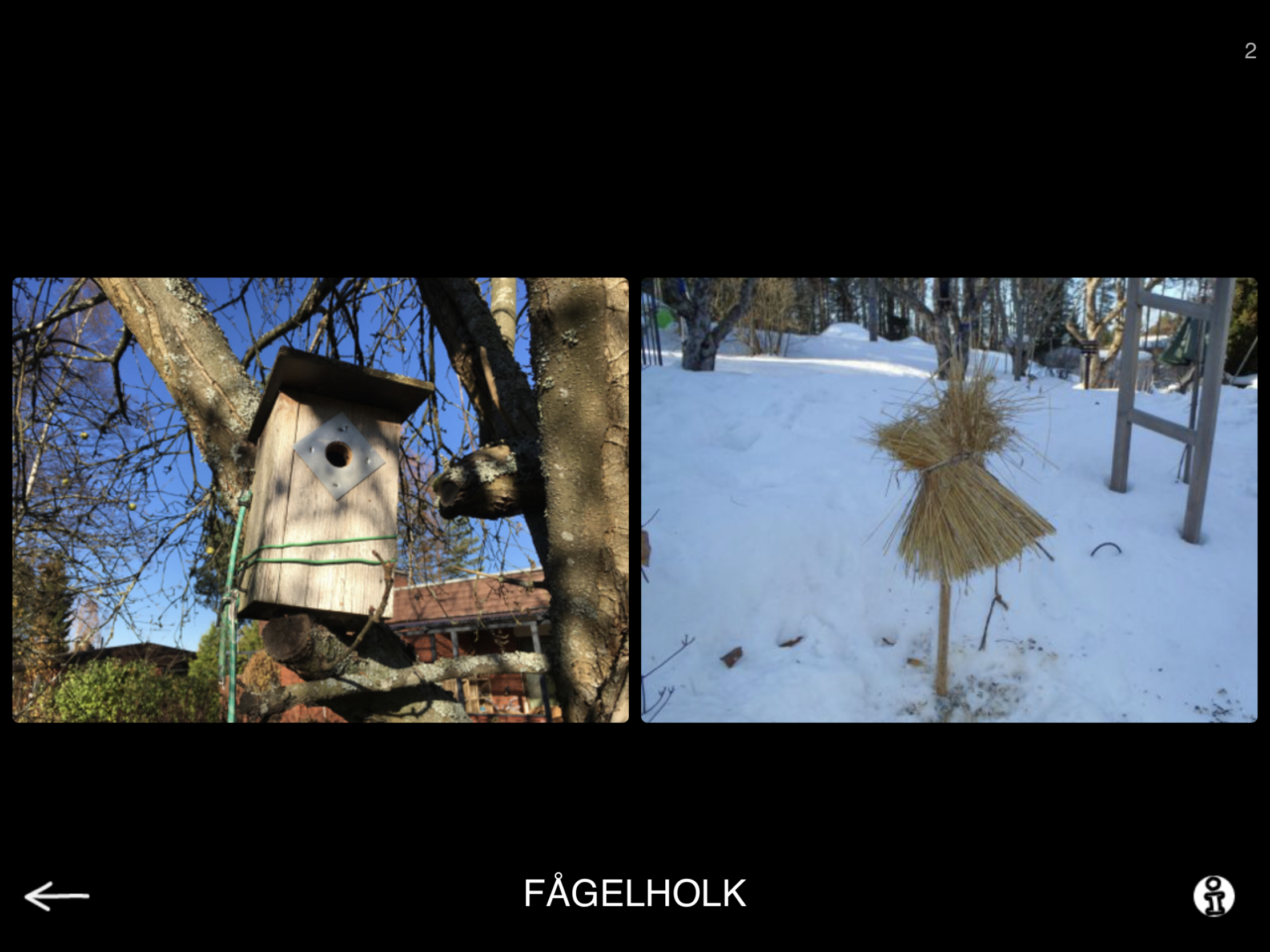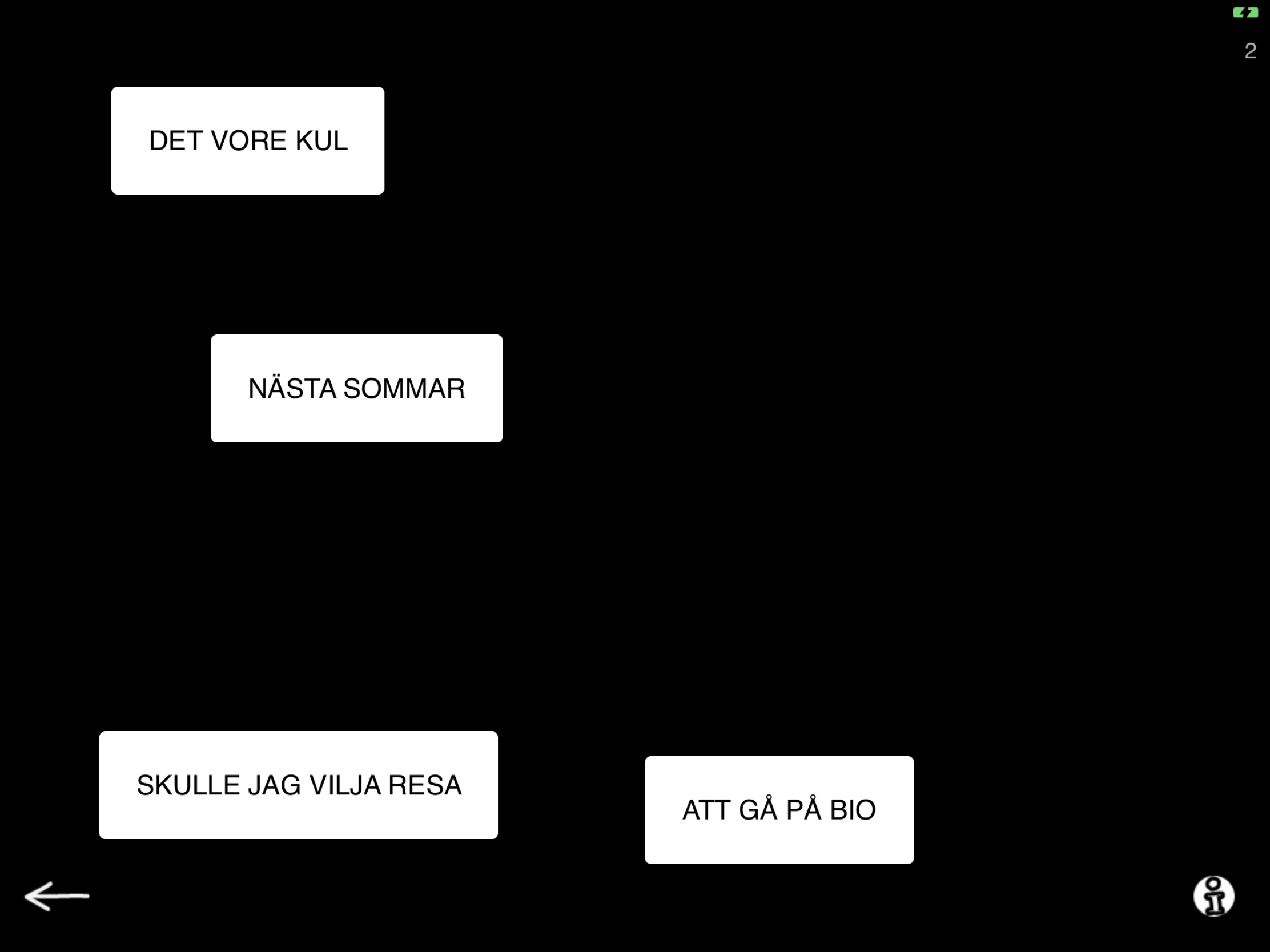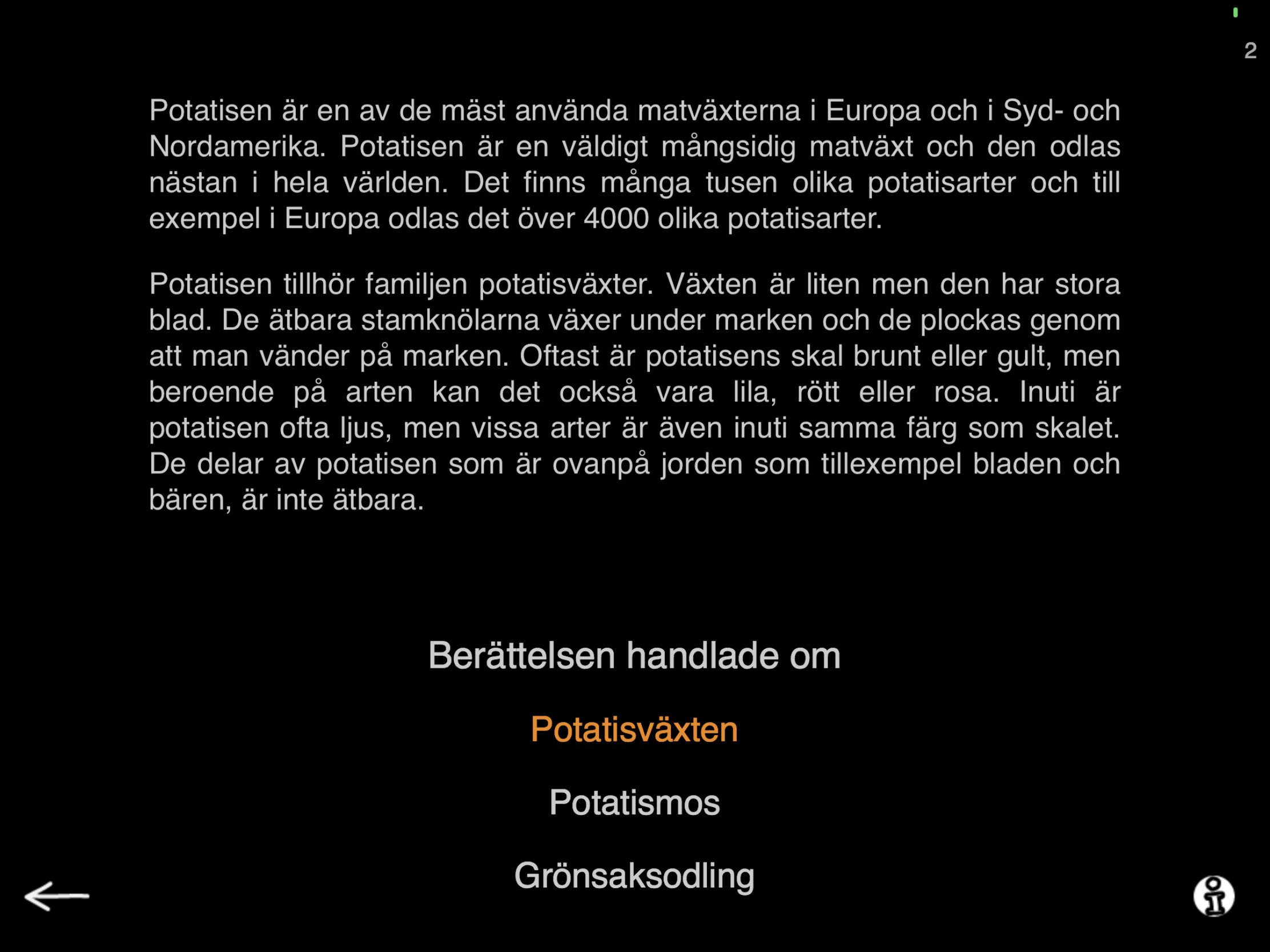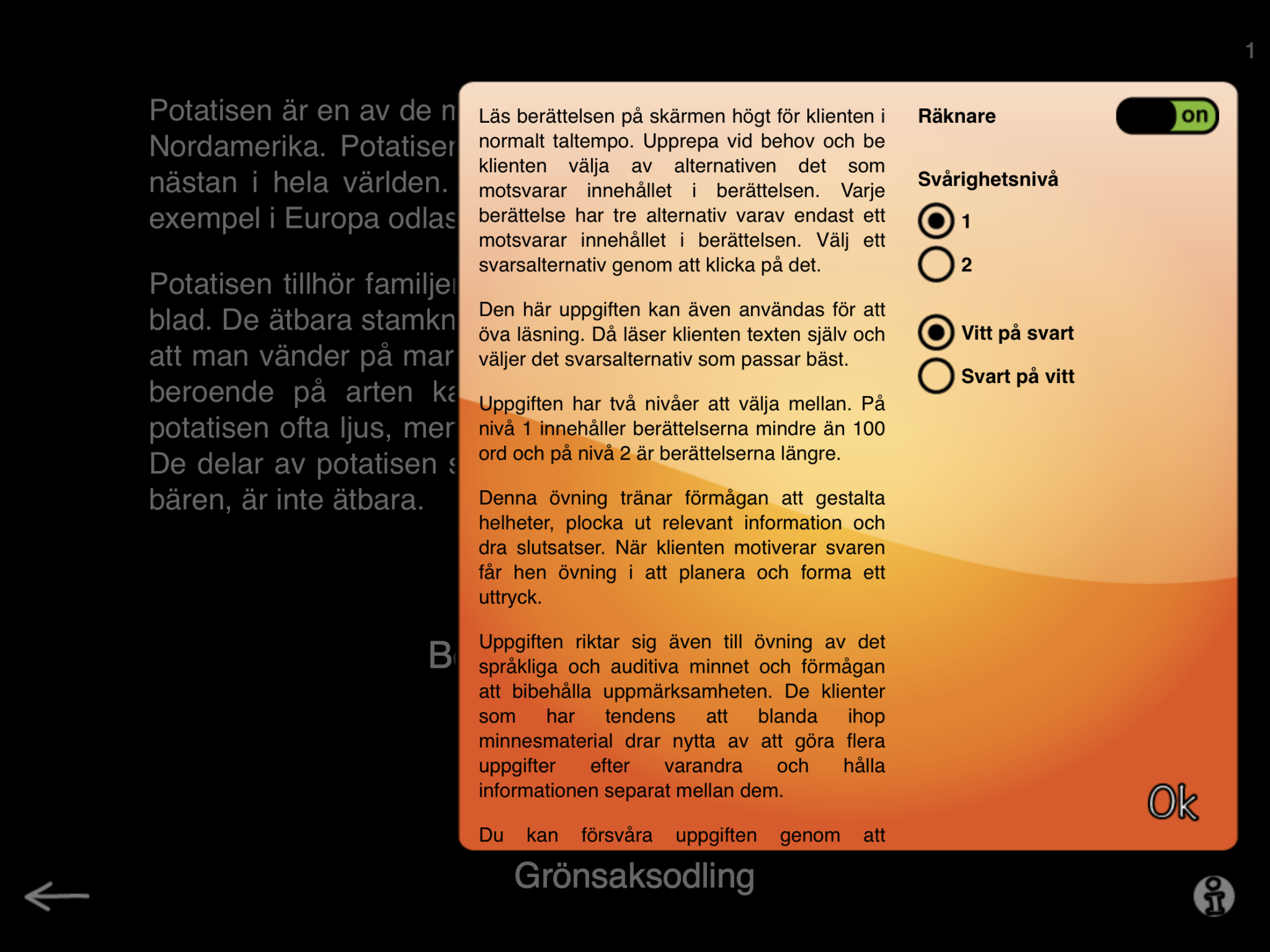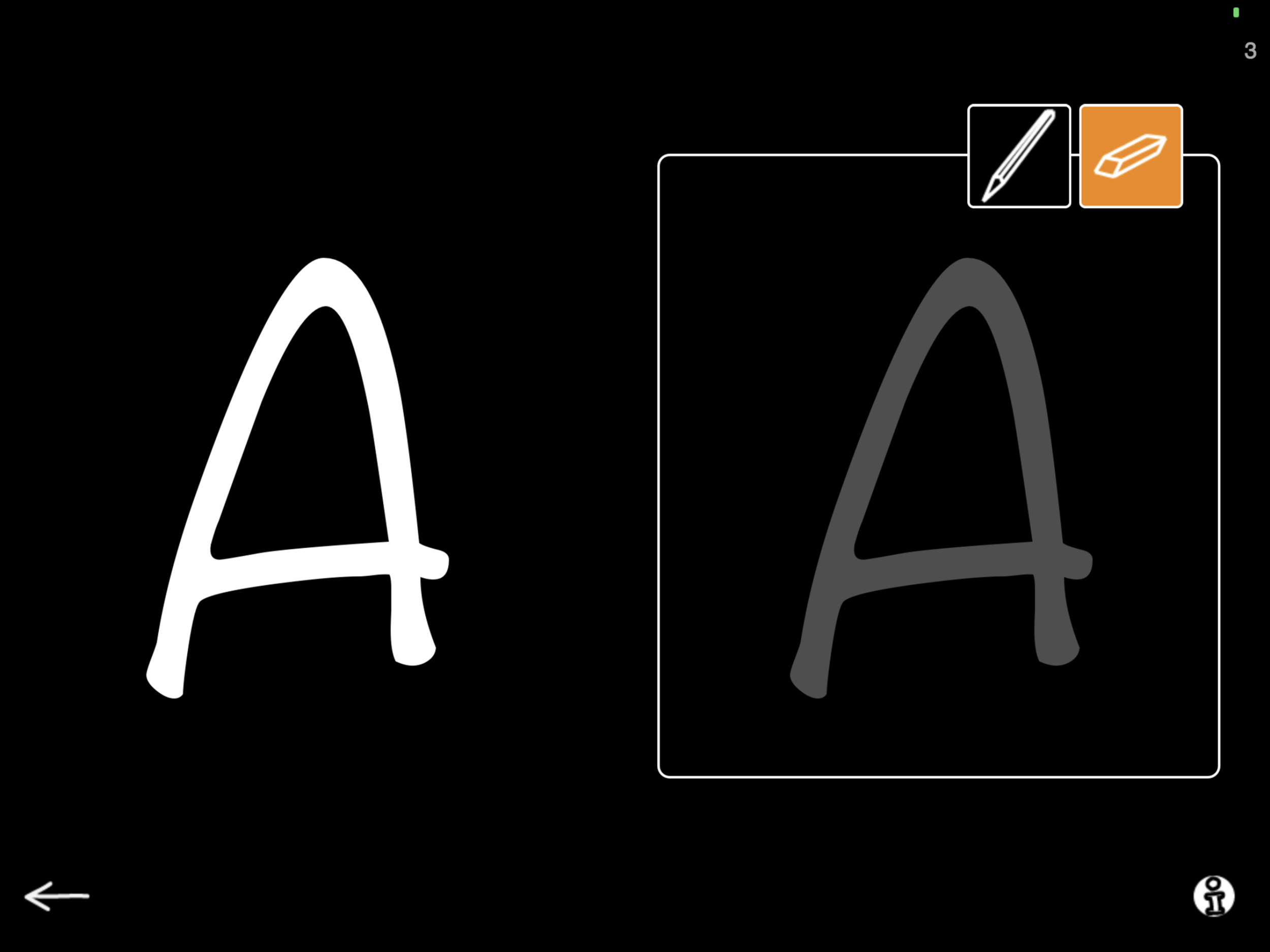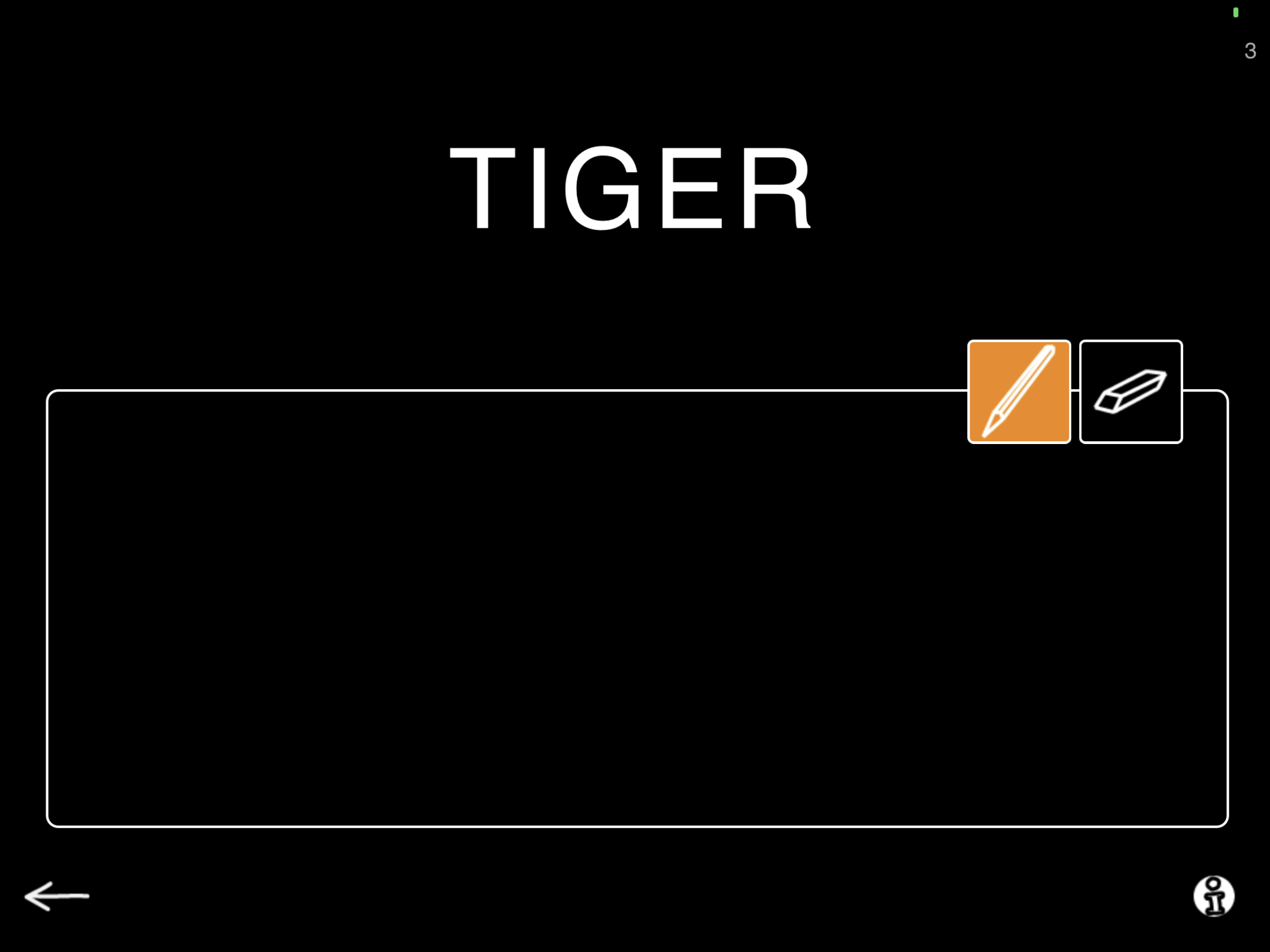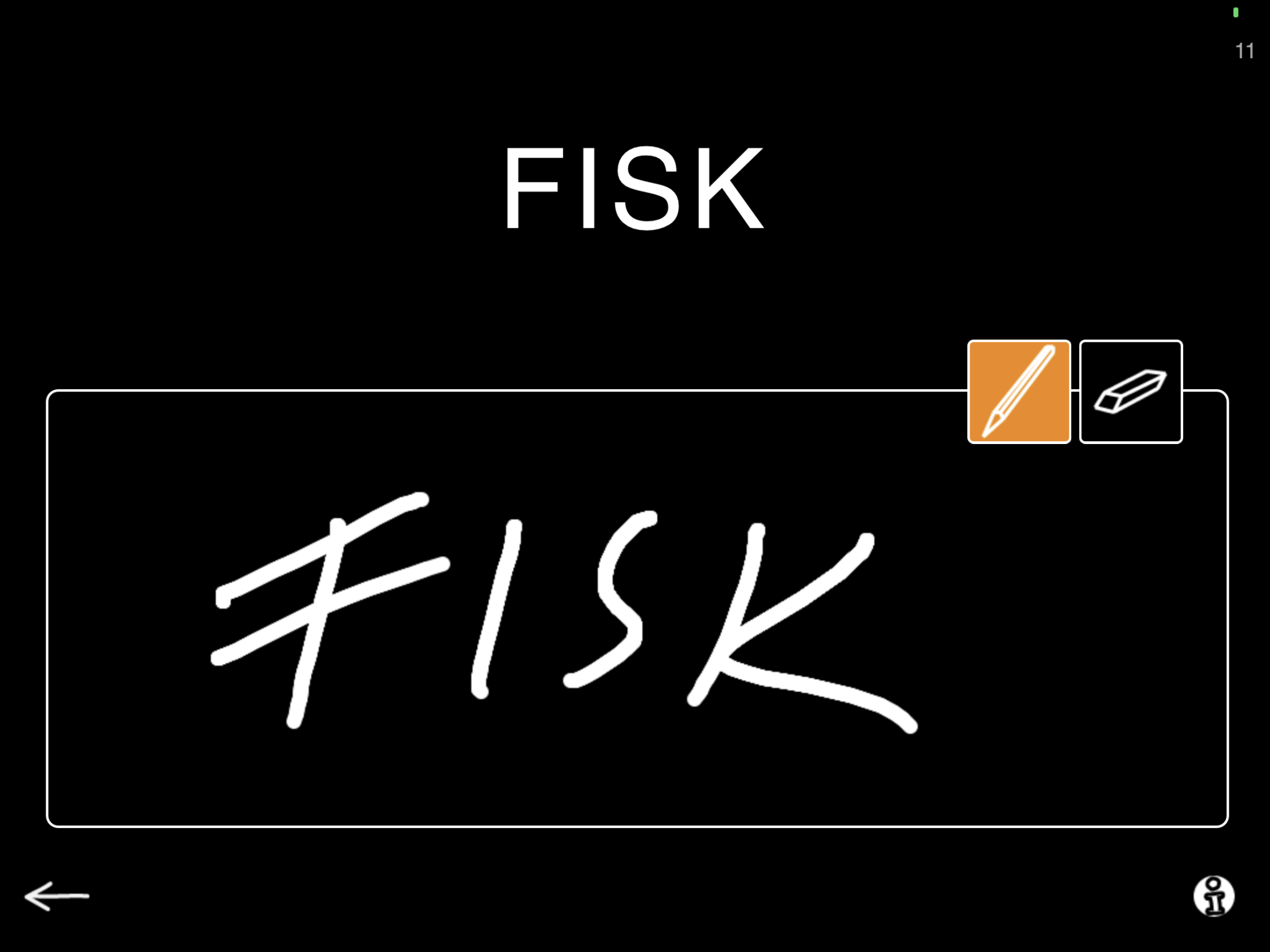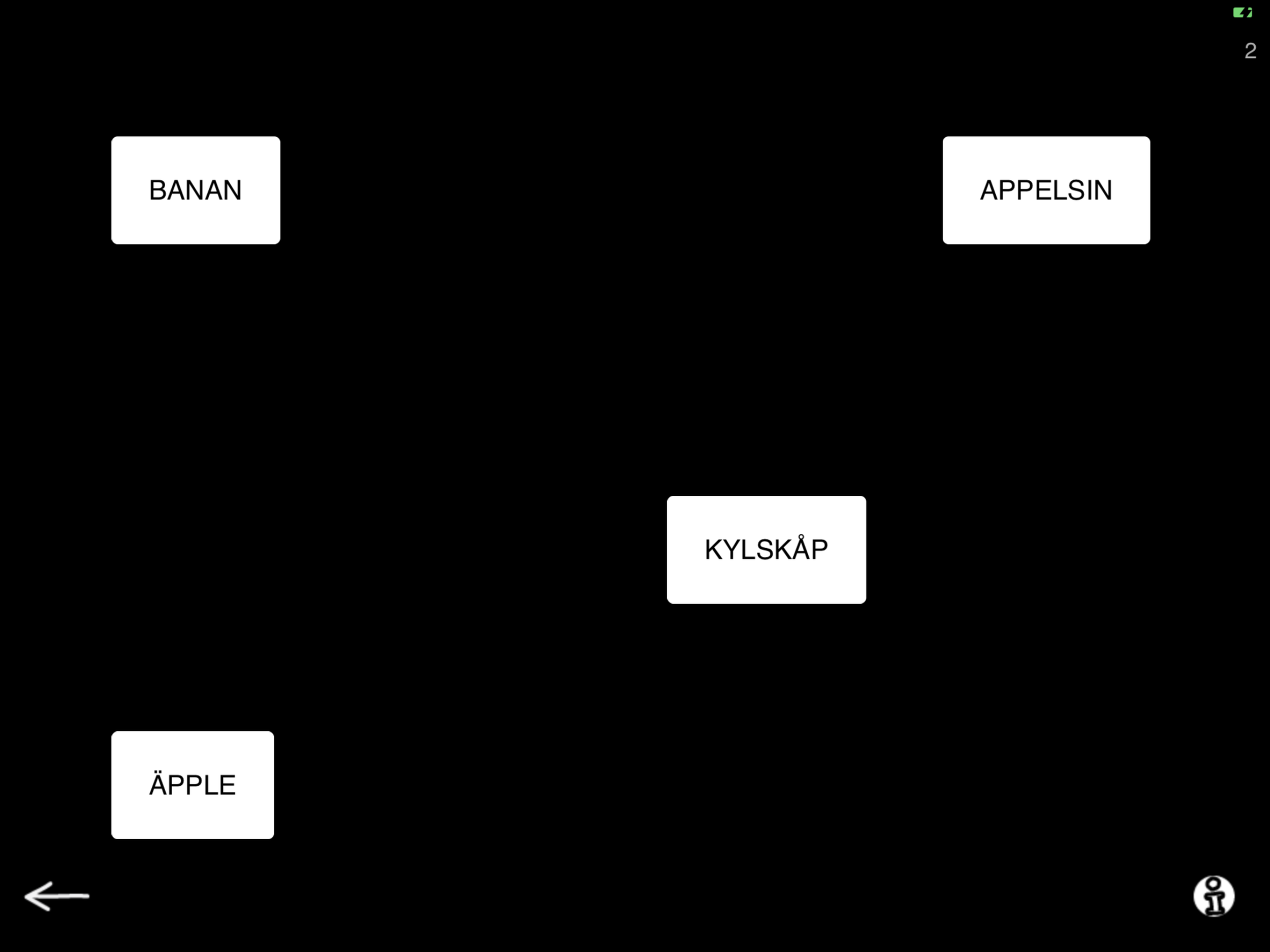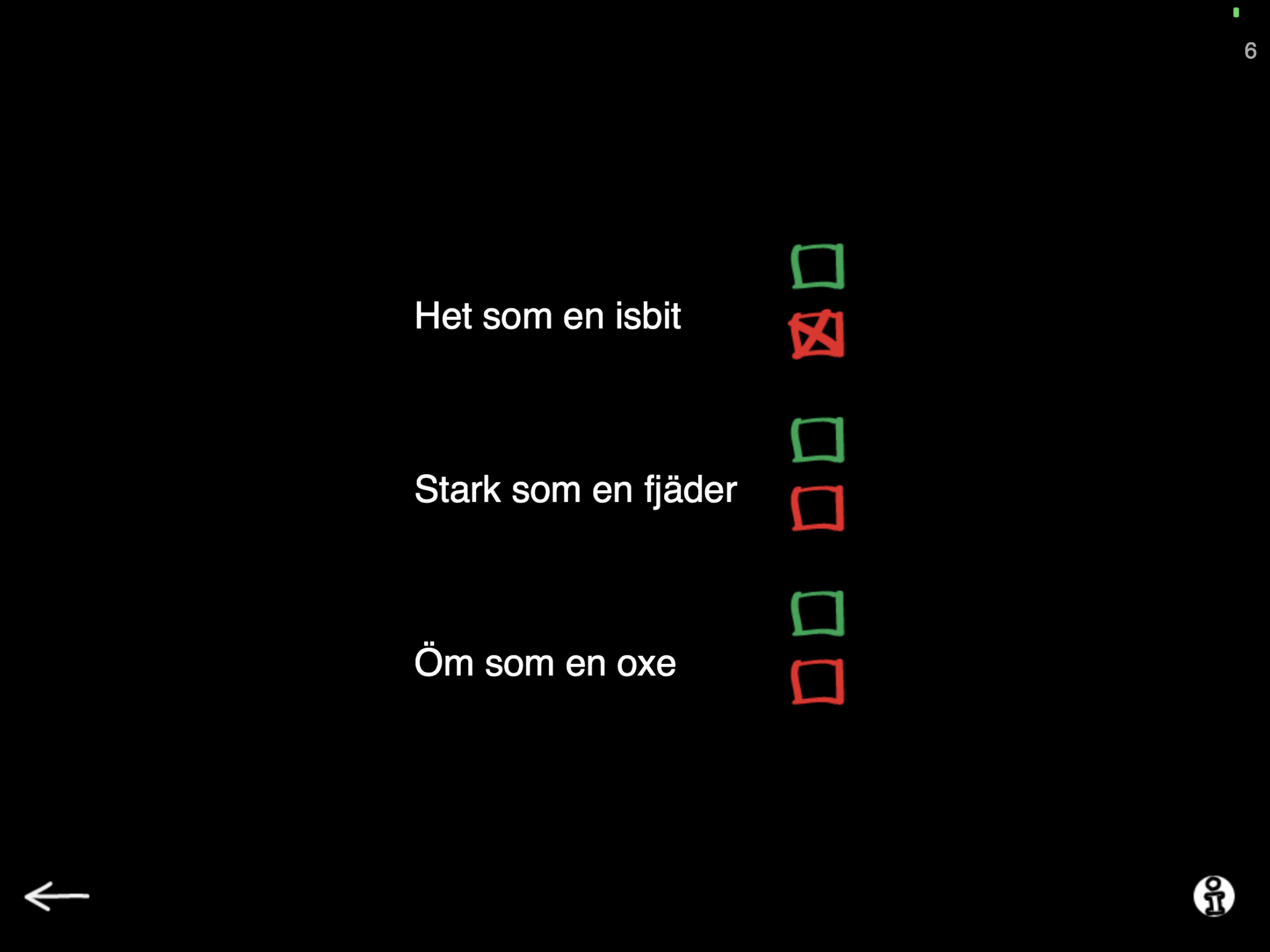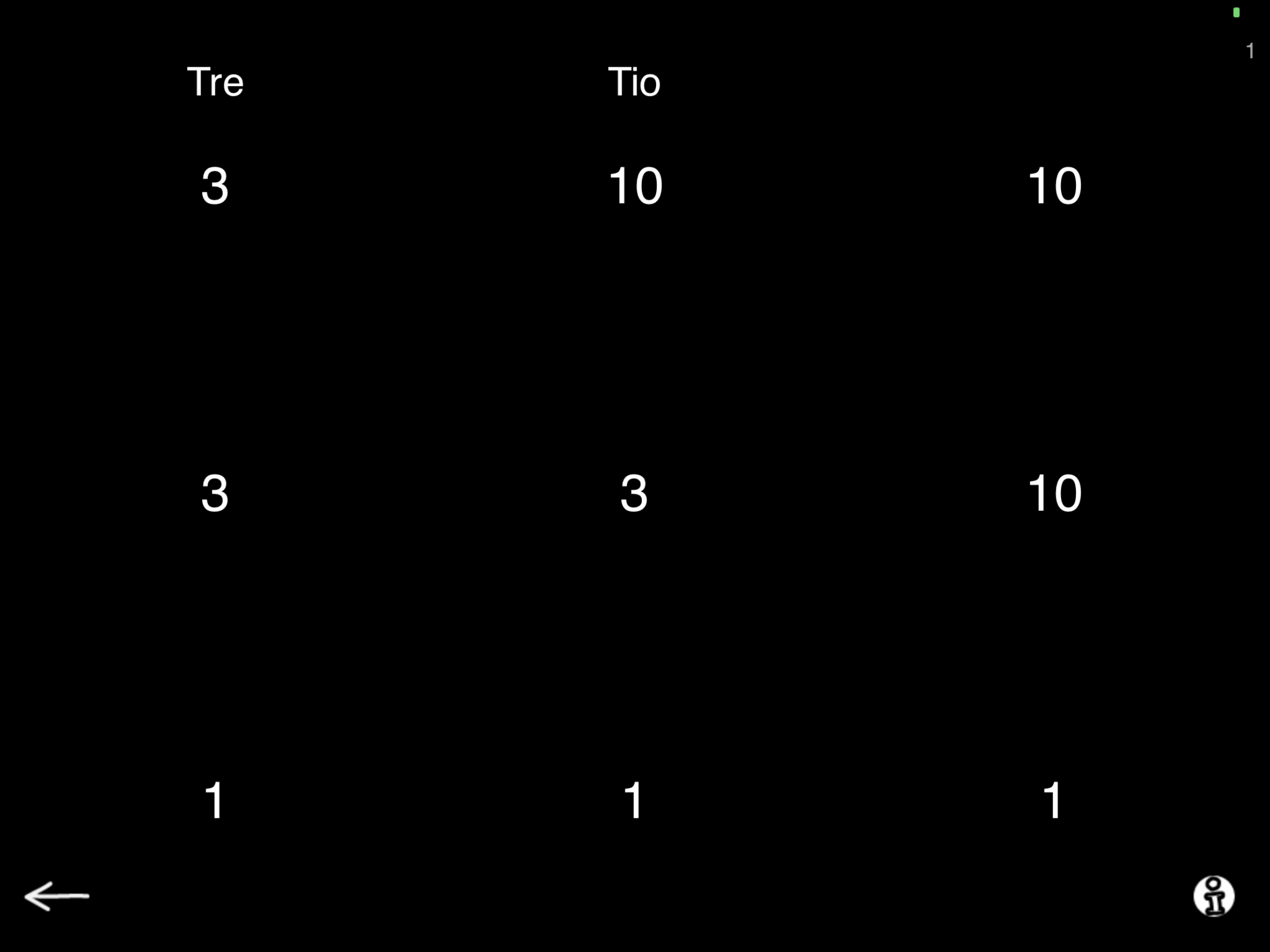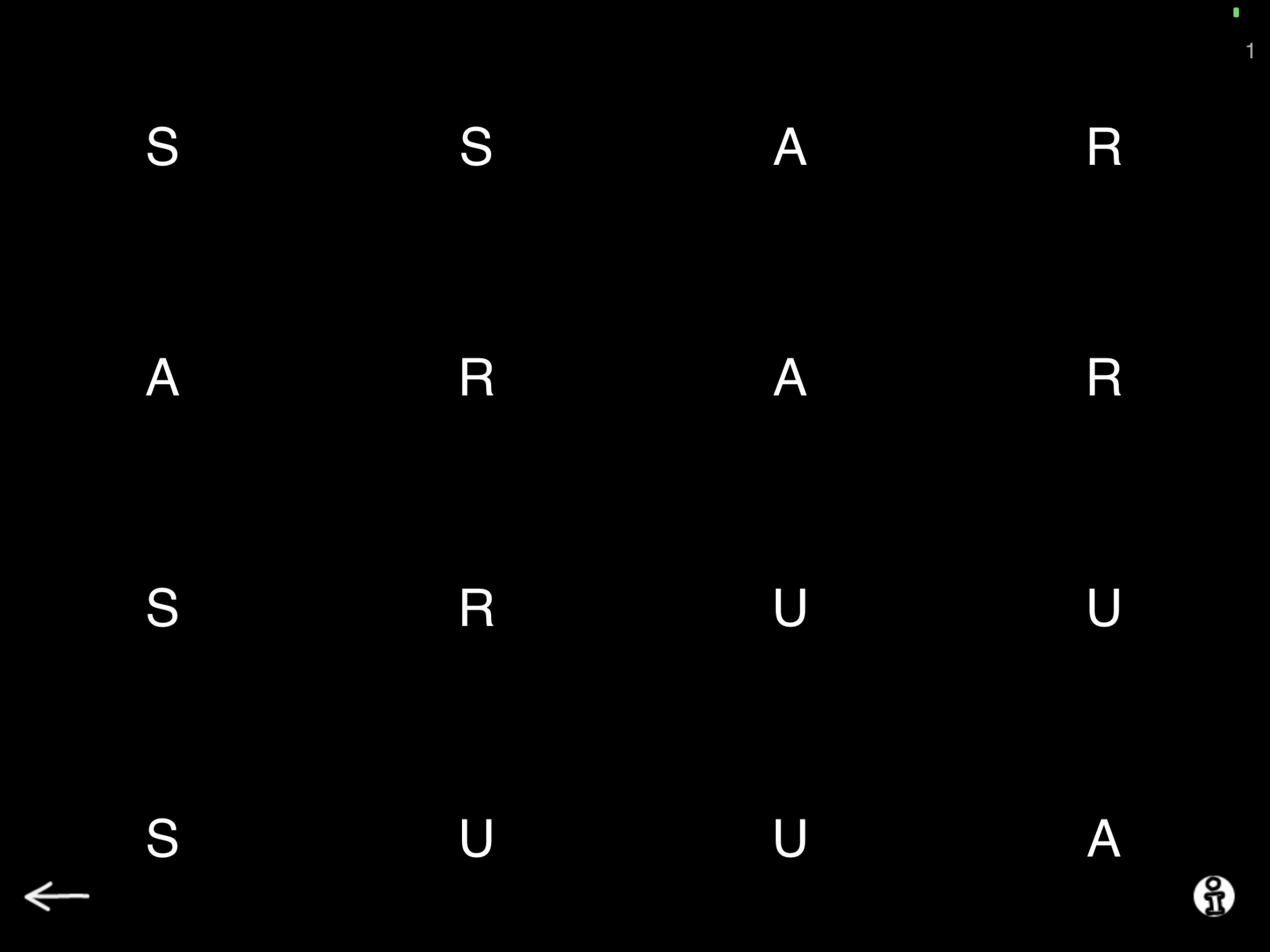Hej!
Nana Lehtinen
We are very, very pleased to welcome a new version of Sanapsis, Sanapsis Svenska! This means we are now officially a family of three languages, English, Finnish and Swedish.
Our Swedish version will be rolled out gradually. The first version includes 15 exercises and it is currently available in the AppStore. We chose these exercises to give you a broad first impression on what Sanapsis can do for you in planning and executing therapy sessions. There is so much more behind the scenes, we are having a hard time holding back! But let’s take a quick first look on what we have available now in our six categories.
Main menu
Speech Production - Talproduktion
We kicked things off with our all time favorite exercises: Naming, nouns - Benämning, substantiv (514 images) and Naming, actions - Banämning - verb (300 images). These exercises provide a broad look into the images used in Sanapsis and also give you a few ideas on how to use these images in a versatile way in therapy. Precise sentence - Bilda en exakt mening also makes use of the images in Sanapsis, this time prompting your patient to produce precise and informative sentences. With examples, of course! Retell a story - Återge berättelsen introduces you to some text material we have created just for therapy.
Comprehension - Förståelse
The comprehension category includes one of my personal favorites. The simple Yes / No - Ja / Nej -exercise. Such an elegant task of listening and answering simple and complex Yes / No questions. Our instructions give examples on how and why to use this task and of course the material of 88 questions is there for you to use as well.
Questions based on text - Frågor om texten provides a little more challenge on listening, attention and deduction skills with more complex material. Please note that there are two levels for this task, Questions and Yes / No arguments.
Reading - Läsning
For the reading category we wanted to start by providing three exercises with different levels of difficulty. Word and picture - Ord och bild is a task of matching a written word to the correct image. Familiar, right? Connect sentences - Sätt ihop meningen provides sentences cut in half for your patient to connect on three different difficulty levels. Again, instructions give you ideas on how and why to use this exercise as well as background on why we think there are many important skills at play when working on these tasks. Read a story - Läs berättelsen is a more challenging task for those patients who read at paragraph level but sometimes struggle with extracting the important information on what they read.
Writing - Skrivning
For writing we included two exercises in our first version: Copy letters by hand - Kopiera bokstäverna för hand and Copy words by hand - Kopiera order för hand. These were included for our patients with more severe challenges. They make the most of iPads touch screen and are designed as a canvas for practicing writing skills maybe with your less dominant hand. Take a look, they are actually very fun to work with!
Semantics - Semantik
For the semantic category we decided to include exercises Is the simile true? - Är jämförelsen sann? and the classic, What does not belong? - Vad hör inte hemma i gruppen? Is the simile true makes use of different similes and asks your patient to use their logic reasoning and interpret figurative language in judging could the given simile be true. Again, more detailed explanations and examples in instruction in the app! What does not belong is most likely a familiar task for every SLP. Our version comes with only words, not images and provides three different difficulty levels. Some of these really challenge you and also make good tasks for reasoning and expressing your opinions. There is usually so much more potential in simple exercises than just completing a task, don’t you think?
Perseveration - Perseveration
Perseveration category introduces two serial naming tasks, Repetitive naming, numbers - Seriell benämning, siffror and Repetitive naming, letters - Seriell benämning, bokstäver. Included are prompts on screen with customizable settings and, you know it by now, instructions and ideas on why and how to make use of these exercises. So many ways to use these prompts, really hope you take time to peek into the instructions and get started with patients whose communication efficacy is lower because of a tendency to persevere.
So, the first version of Sanapsis Svenska is officially out in the world. As with all the versions, our updates and additions (yes, many many more exercises on their way) will always be free. No in-app purchases, no hassle. Please let us know what you think and send us your ideas on improvement and expansions. Looking forward to working together with a new group of friends from Sweden. Vi hörs!

